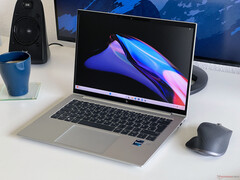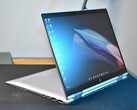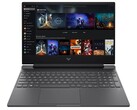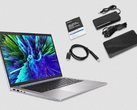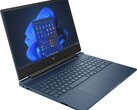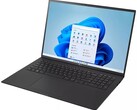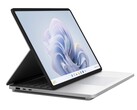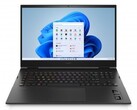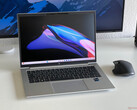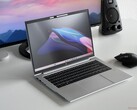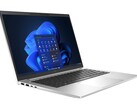Even though the EliteBook 1040 G10 should really be at the top of HP's hierarchy of 14-inch business laptops, our detailed test reveals several weaknesses and also disadvantages compared to the slightly heavier EliteBook 845 G10 that is equipped with AMD CPUs. The EliteBook 1040 G10 is exclusively available with Intel processors, with HP using the current Raptor Lake chips. Our test unit for 1,669 Euros (~$1,786) is one of the most affordable configurations with the Core i5-1335U and low-power display with an advertised brightness of 400 cd/m².
If we start with the Core i5 that only offers two Performance cores, its performance is of course basically still sufficient for most office tasks, and those who decide for the Core i5 will probably also understand that there are faster processors (with the fastest for the EliteBook 1040 being the Core i7-1370P). However, we have to complain about the HP's configuration of the Intel processor, since the processor is able to consume up to 52 watts in all the power profiles. This also means that the two Performance cores quickly reach high clock speeds and at the same time high temperatures. Even with everyday tasks such as having several open browser tabs, the fan repeatedly starts to rev up. While this is of course good for short-term benchmarks, it is annoying in everyday operation. We also don't understand why HP doesn't differentiate more between the separate power profiles. The user should have the option to also benefit from a quieter fan when using a more efficient profile.
The matte low-power display is another weakness, since it clearly fails to reach the advertised brightness of 400 cd/m² (with only 330 cd/m² on average). On the other hand, the subjective image impression is good and the color profile also excellent after an additional calibration - the corresponding color profile is available for your free download from a link in our test. But even the small sRGB color space isn't covered completely, and the response times are also very slow, leading to some visible ghosting effects. While the display overall isn't bad at all for a business laptop and the panel also doesn't consume a lot of power, the results are slightly disappointing considering the price. Even though the SureView display with a maximum brightness of up to 1,000 cd/m² is optionally also available, that shows some problems with the subjective image quality in our test: The brightness adjustment is problematic with low brightness values of less than ~100 cd/m² only being usable with an active privacy filter. In addition, the viewing angles are basically very limited, so there is really only a small sweet spot in the center in front of the display, where the user can actually benefit from the high brightness. Unfortunately, the optional WQHD panel of the EliteBook 845 G10 that offers a great image quality (higher than 500 cd/m² brightness, fast response times, 120 Hz, P3 color space) isn't available as an option for the EliteBook 1040 G10. Even though that would have some slight impact on the battery life, it is without a doubt the better display.
Like its closest competitor, the Lenovo ThinkPad X1 Carbon, the expensive EliteBook 1040 G10 continues to be exclusively available with Intel CPUs. While that isn't a huge problem in principle, the processor power limits should then also be adjusted better to the device. On the other hand, the EliteBook 1040 G10 of course also brings some advantages, and the magnesium case is slightly lighter and with that also more mobile than the aluminum case of the EliteBook 845 G10. In addition, there are extensive security features, modern connections, and very good input devices. You can find more details on the EliteBook 1040 g10 in our extensive review and test report:




